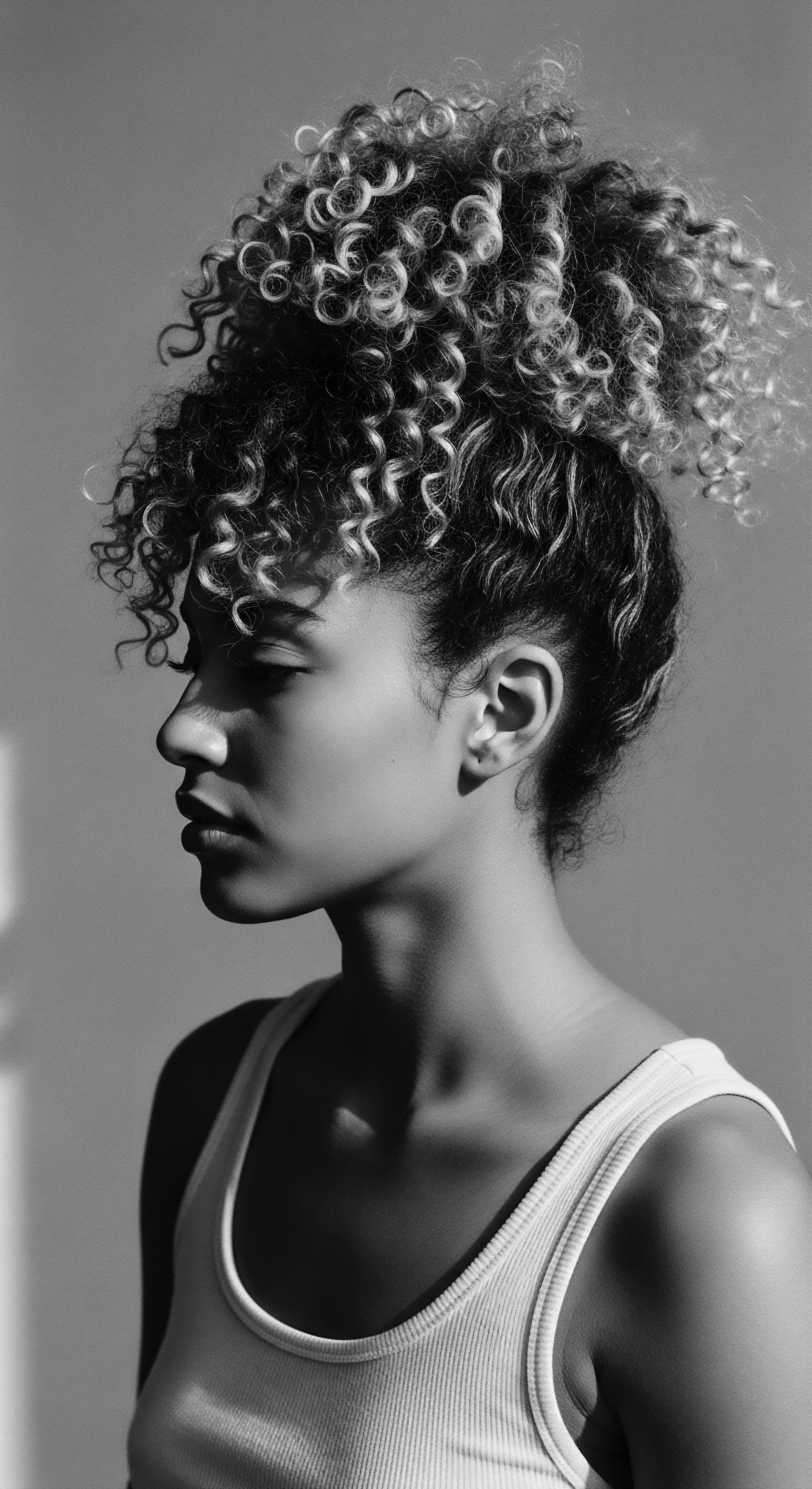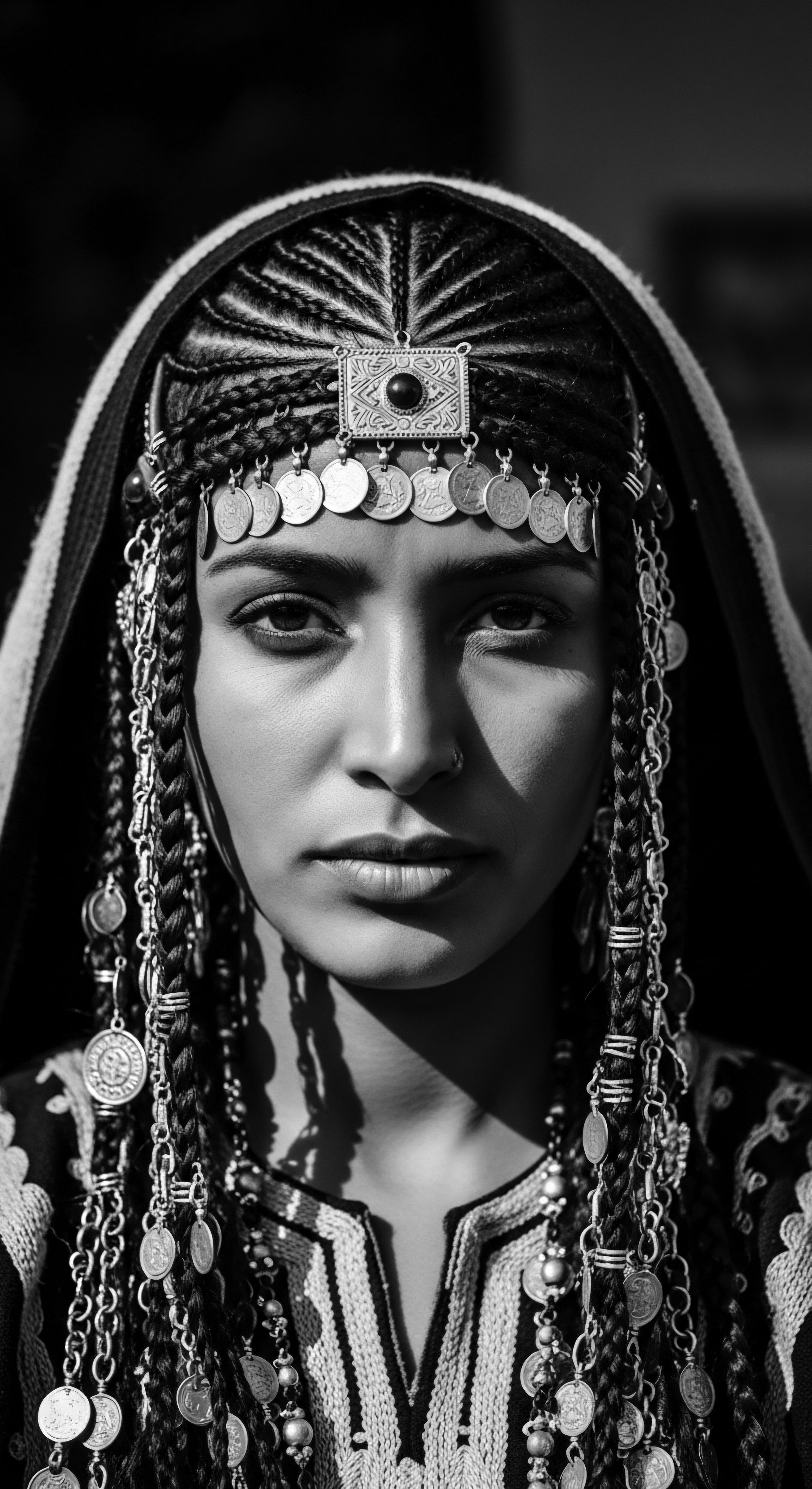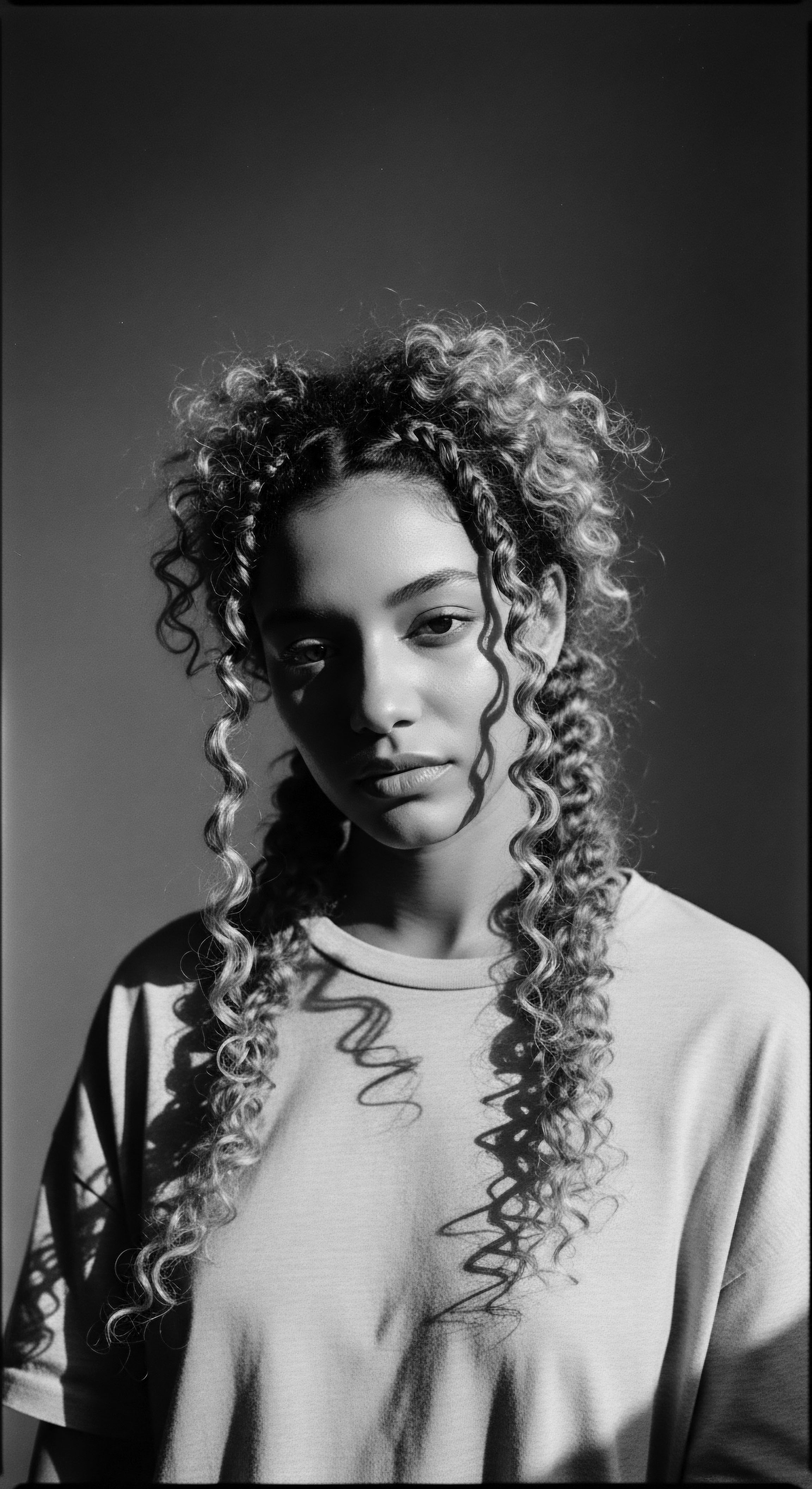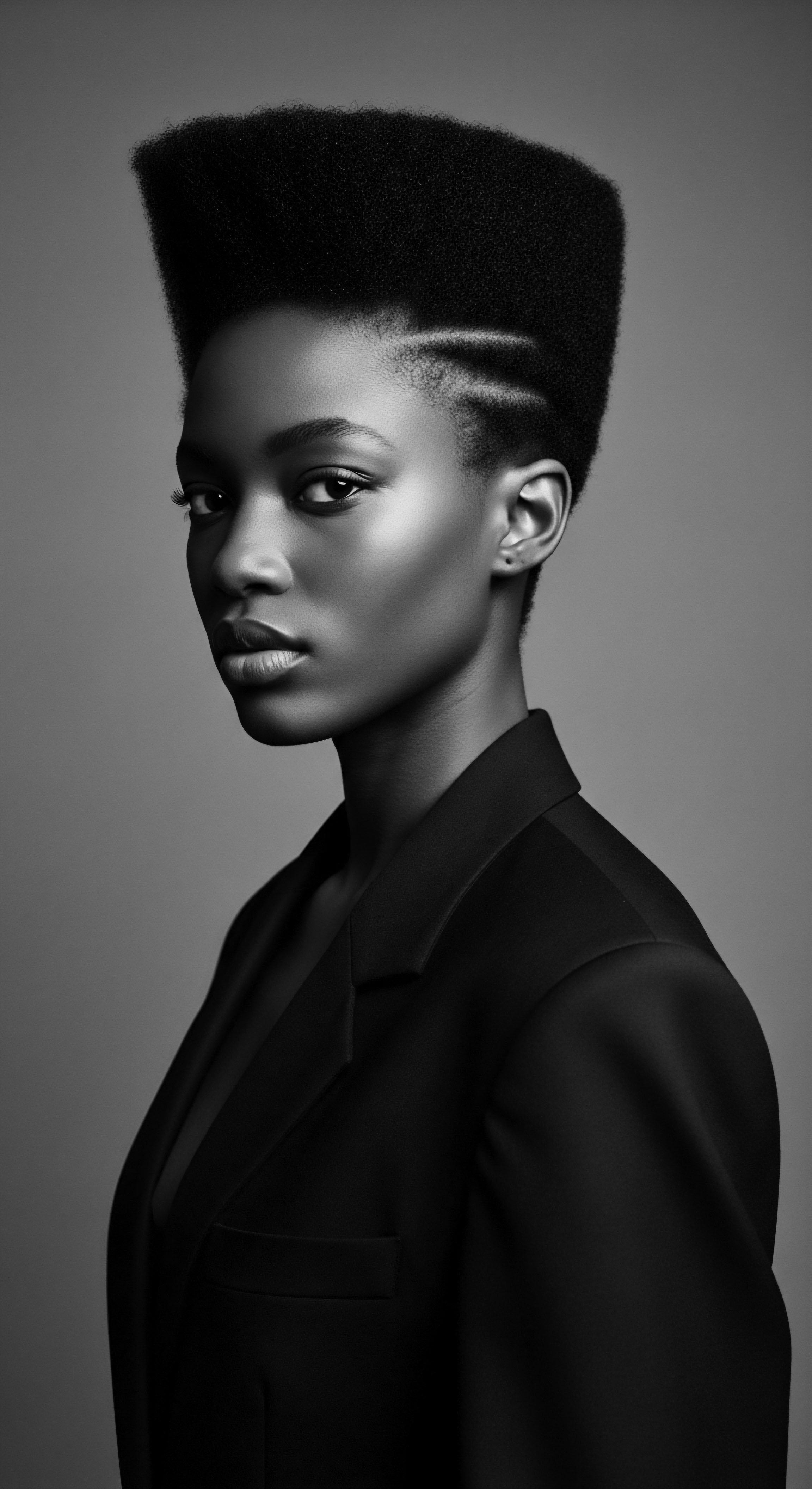
Roots
There is a profound, almost primal, resonance in the very fibers of our textured hair, a whisper of ages past. For those of us whose strands coil and curve, defying gravity in intricate patterns, hair is far more than a biological outgrowth. It is a living chronicle, a parchment inscribed with the stories of ancestors, the silent witness to journeys across continents and through generations. When we consider changing hair’s inherent hue, even in ancient times, we touch upon a legacy that transcends mere aesthetics.
It speaks to identity, protection, belonging, and a deep, intuitive understanding of the earth’s abundant offerings. How did heritage shape traditional hair coloring? Its roots sink into the very soil of human experience, where elemental biology met creative expression and ancestral wisdom.
Our journey begins in an era when connection to the land was absolute, a time when every leaf, every mineral, held potential meaning. The earliest practices of adorning and altering hair, particularly within communities that would birth the magnificent spectrum of textured hair, were rarely arbitrary. They were informed by environmental necessity, by spiritual conviction, and by the social tapestries within which individuals found their place.
The very structure of melanin, the pigment that gives hair its natural color, held secrets our forebears instinctively sought to complement or alter. These initial explorations into hair color were driven by a profound symbiosis between the human spirit and the natural world, a direct inheritance.

What Were the Earliest Connections to Earth’s Pigments?
Long before commercial dyes graced salon shelves, the earth herself offered a palette. Across various indigenous and ancestral African societies, the very ground beneath one’s feet, the plants that flourished in sun-drenched landscapes, became sources for altering hair’s shade. These were not simply colorants; they were often ingredients imbued with medicinal properties, protectants against harsh sun or biting insects, or symbols of social standing.
The preparation of these materials — grinding minerals, decocting barks, fermenting leaves — was a ritual in itself, passed down through the hands of elders, carrying with it a profound understanding of botany and chemistry, generations before formal science. The knowledge embedded in these practices represents a vast reservoir of inherited wisdom.
Consider the widespread use of Ochre across various African cultures. This iron-rich clay, found in hues ranging from earthy red to vibrant yellow, was not solely a hair colorant. It offered a protective layer, shielding hair and scalp from the intense African sun, and also acted as a natural cleansing agent. Its application, often mixed with animal fats or plant oils, spoke to a holistic approach to hair care, where adornment, hygiene, and protection intertwined.
This practice, seen among groups like the Himba of Namibia, underscores how hair adornment was intrinsically linked to survival and cultural expression. The very act of preparing and applying ochre was a connection to ancestral lands and the resources they provided.
Traditional hair coloring was an extension of ancestral knowledge, utilizing earth’s bounty for adornment, protection, and identity.

Does Hair Anatomy Shape Pigment Absorption?
Understanding how heritage shaped traditional hair coloring also requires a glance at the hair itself. Textured hair, with its unique elliptical cross-section and often dense curl pattern, presents specific challenges and opportunities for pigment interaction. The cuticle, the outermost layer of the hair shaft, is often more raised and complex in highly textured hair, creating a different surface for external applications.
Early colorants, often derived from minerals or plant compounds, would interact with this structure in ways that varied from straight hair. Instead of deeply penetrating the cortex in some cases, many traditional applications formed a rich coating on the outer layers, offering a protective sheen while imparting color.
This external application was often desirable, preserving the hair’s inherent strength while offering aesthetic benefits. The natural oils and butters commonly used alongside these colorants would also create a barrier, sealing in moisture and enhancing the bond of the pigment. The ancestral understanding of these interactions, without the aid of microscopes or chemical analysis, speaks to an observational brilliance, a deep familiarity with the properties of their own strands. This knowledge, honed over millennia, forms a quiet yet profound foundation for our contemporary understanding of textured hair biology.
| Traditional Pigment Ochre (various iron oxides) |
| Geographical/Cultural Context Southern and East Africa (e.g. Himba, San) |
| Primary Hair Use Reddish-brown color, sun protection, cleansing, cultural status marker. |
| Traditional Pigment Indigo (Indigofera tinctoria) |
| Geographical/Cultural Context West Africa (e.g. Yoruba, Fulani), North Africa |
| Primary Hair Use Deep blue/black color, often used for braiding extensions, symbolic. |
| Traditional Pigment Henna (Lawsonia inermis) |
| Geographical/Cultural Context North Africa, Middle East, parts of East Africa |
| Primary Hair Use Reddish-orange color, conditioning, strengthening, celebratory adornment. |
| Traditional Pigment Kohl (galena, antimony) |
| Geographical/Cultural Context North Africa, Middle East |
| Primary Hair Use Darkening hair, sometimes used as a protective lining around the eyes. |
| Traditional Pigment These earth-derived pigments illustrate a profound ancestral connection to natural resources for hair adornment and well-being. |

Ritual
The transition from merely using earth’s bounty to formally applying color transformed practice into ritual, deeply embedding hair coloring within the communal life and personal identity of diverse peoples. For many African and diasporic communities, hair was never a trivial matter. It served as a spiritual antennae, a social billboard, and a profound personal statement.
The application of color, then, transcended a simple cosmetic change; it became a ceremonial act, marking rites of passage, signifying marital status, announcing mourning, or celebrating victory. Heritage shaped these traditions by infusing every application with meaning and collective memory.
The act of preparing and applying natural hair colorants often involved community participation, making it a shared experience. Grandmothers taught daughters, mothers guided their children, and peers assisted one another in intricate applications that were both skillful and imbued with social connection. This communal aspect reinforced cultural norms and transferred ancestral knowledge from one generation to the next without formal instruction, through hands-on learning and shared storytelling. The pigments themselves became carriers of cultural narrative, their hues speaking volumes about a person’s life stage, lineage, or aspirations.

How Did Coloring Mark Life’s Journeys?
Traditional hair coloring often served as a powerful marker of life transitions, a visible manifestation of an individual’s journey. Among some West African societies, for example, specific shades or applications of Indigo might signify a young woman’s readiness for marriage, or a new mother’s entry into a different phase of community life. For elders, the darkening of hair, even artificially, could symbolize continued wisdom and authority, countering the visible markers of aging with a deliberate statement of enduring power.
A striking example can be observed among the Himba women of Namibia, whose distinctive red ochre paste, Otjize, applied to their hair and skin, is not merely cosmetic. It is a central element of their identity, spirituality, and social structure. This daily ritual, involving the mixing of ground ochre with butterfat and and aromatic resins, symbolizes the earth and the richness of the land.
Its application marks status, age, and beauty, defining Himba women from childhood through old age (Mbenzi & Simalu, 2018). The meticulous layering of otjize, creating thick, sculpted dreadlocks, signifies their commitment to their heritage and their deep connection to their ancestral lands, a truly profound statement of cultural belonging.
Hair coloring rituals were woven into the fabric of life, signifying transitions, identity, and shared community.

Were Tools and Techniques Part of Hair Coloring Rituals?
The tools and techniques associated with traditional hair coloring were as varied as the cultures themselves, yet they shared a common thread of ingenuity and respect for materials. From simple pestles and mortars for grinding pigments to finely crafted combs and applicators made from bone, wood, or shell, each implement served a purpose within the ritual. These tools were often passed down through families, becoming artifacts of family heritage themselves, imbued with the energy of past hands that used them.
- Grinding Stones and Mortars ❉ For preparing plant materials and minerals into fine powders for mixing.
- Gourds and Clay Pots ❉ For mixing the colorants with liquids or oils, often heated to enhance pigment release.
- Fine-Toothed Combs and Sticks ❉ For sectioning hair and applying the paste evenly, ensuring full coverage.
- Natural Fibers and Leaves ❉ Used as applicators or to wrap treated hair, aiding absorption and preventing transfer.
The very process, from harvesting the raw materials to the careful application, often involved specific prayers, songs, or incantations, transforming the act of coloring into a spiritual exercise. The patient hours spent in preparation and application fostered a deep mindfulness, a reverence for the hair and the power it held as a cultural conduit. These ancient methods, seemingly simple, reveal a sophisticated understanding of natural chemistry and a profound appreciation for the sacredness of personal adornment. They show us how hair care, in its traditional guise, was never divorced from the broader spiritual and social life of a community.

Relay
The ancestral knowledge surrounding traditional hair coloring did not simply vanish; it transformed, adapted, and was relayed through generations, often silently, sometimes defiantly. The journey of these practices across oceans, through forced migrations, and into new diasporic realities profoundly shaped their evolution. Enslavement and colonization sought to strip away cultural identifiers, including hair traditions, yet the memory of these practices, and the ingenuity to recreate them with available resources, persisted. This enduring spirit reveals a tenacious link between heritage and the self, a testament to the power of hair as a repository of cultural memory and defiance.
In many instances, the specific plants or minerals native to ancestral lands were no longer accessible. Communities then innovated, seeking out new botanicals or methods that could replicate desired effects or offer similar protective qualities. This adaptive resilience is a hallmark of textured hair heritage.
The traditional wisdom was not a rigid set of rules, but a flexible framework, capable of bending without breaking, preserving the essence of the ritual even as its external forms changed. This relay of knowledge, often clandestine or subtly expressed, forms a crucial, unspoken narrative of continuity.

How Did Traditional Knowledge Adapt to New Environments?
As African peoples were dispersed globally, the botanical pharmacopeia of their homelands became largely unavailable. This necessitated a creative adaptation, drawing upon the flora of their new environments to maintain hair care traditions. For example, while indigo and henna were staples in certain parts of Africa, the enslaved and their descendants in the Americas began to experiment with plants like coffee, tea, and local barks for darkening hair, or root extracts for lightening. These were not always direct equivalents in terms of chemical properties, but they served similar cultural and aesthetic purposes, demonstrating a remarkable capacity for innovation born out of necessity.
Consider the ingenuity behind the creation of “blacking” for hair in the Caribbean and Southern United States during slavery. Lacking traditional African pigments, enslaved individuals often used a mixture of Lampblack (soot), animal fat, and sometimes indigo procured through trade, to darken hair and provide a protective sheen (Byrd & Tharps, 2001, p. 18).
This practice, born of oppressive circumstances, nonetheless spoke to a deep, inherited desire to maintain cultural norms of hair adornment, to express identity, and to protect the hair under harsh conditions. It was a silent act of preservation, a relay of cultural values through the very act of maintaining one’s hair.
The transmission of this heritage was often oral, through observation and direct participation. Children watched as their elders mixed concoctions, applied them with care, and celebrated the results. This informal education ensured that the fundamental principles – respect for natural ingredients, the importance of protective styling, and the social significance of hair – endured even when specific ingredients changed. The underlying wisdom, the ‘why’ behind the ‘what’, remained intact.

Do Modern Hair Coloring Practices Reflect Ancestral Wisdom?
Today, the landscape of hair coloring is vast, dominated by synthetic dyes and complex chemical processes. Yet, within the natural hair movement and increasingly, the broader beauty industry, there is a visible return to the principles of ancestral wisdom. Many seek out plant-based dyes like Henna and Indigo, not just for their color, but for their conditioning properties, their gentler interaction with the hair shaft, and their connection to a more holistic approach to well-being. This reflects a conscious relay, a deliberate reaching back to heritage.
The scientific understanding of these traditional colorants now validates what ancestors knew intuitively. Henna, for example, contains Lawsone, a pigment molecule that binds to the keratin in the hair, offering a long-lasting stain and often improving hair strength. Modern research into the conditioning benefits of ingredients traditionally used alongside dyes, such as various plant oils and butters, confirms their efficacy in nourishing and protecting textured hair (Odunze et al.
2018). This convergence of ancient practice and contemporary science highlights how heritage informs current beauty practices, offering alternatives to harsh chemicals and promoting a more sustainable approach to hair care.
The enduring power of traditional hair coloring lies in its capacity to adapt and transmit cultural values across time and new environments.

Reflection
The journey through the heritage of traditional hair coloring reveals a truth as deep and intricate as the human experience itself. Our strands, in their varied textures and hues, carry an undeniable weight of history, a testament to resilience, ingenuity, and profound connection. From the earliest earth-derived pigments offering both adornment and protection, to the sophisticated rituals that marked every significant life passage, hair coloring was never a superficial act. It was, and remains, a dialogue with our past, a vibrant expression of who we are, and a quiet declaration of our enduring spirit.
The threads of this heritage are not relegated to dusty archives; they are alive, vibrating in the choices we make today about our hair care. The ancestral impulse to adorn, protect, and identify through hair color continues to shape contemporary practices, whether consciously or through inherited cultural memory. It speaks to a profound meditation on textured hair, its heritage, and its care, presented as a living, breathing archive, always evolving yet rooted in its sacred origins. The legacy of how heritage shaped traditional hair coloring continues to illuminate our paths, a vibrant and permanent part of the soul of a strand.

References
- Byrd, A. D. & Tharps, L. L. (2001). Hair Story ❉ Untangling the Roots of Black Hair in America. St. Martin’s Press.
- Mbenzi, B. F. & Simalu, F. E. M. (2018). The cultural significance of body adornment among the Himba people of Namibia. International Journal of Indigenous Research and Scholarship, 14, 5-20.
- Odunze, J. N. Mba, E. & Madu, M. (2018). Traditional African Hair Care Practices and their Relevance in Modern Times. Journal of Dermatology and Cosmetology, 2(3), 1-5.
- Sieber, R. & Herreman, F. (2000). Hair in African Art and Culture. Museum for African Art.
- Van Wyk, B. E. & Gericke, N. (2000). People’s Plants ❉ A Guide to Useful Plants of Southern Africa. Briza Publications.
